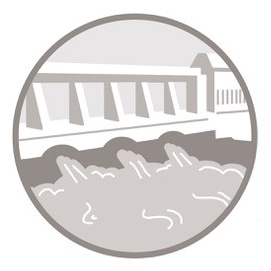Increased erosion in the mountains, increasing natural hazards, increased drought and heat are challenges for power generation and distribution. The conflicting goals of hydropower use and nature conservation are exacerbated. Savings in energy consumption in winter are offset by increases in the summer. Shorter snow cover and a longer growing season improve the conditions for certain energy sources.


The following overview shows the most important risks and opportunities for energy supply based on the Confederation’s climate change analysis completed in 2017[. Risks and opportunities for individual parts of the country are addressed in the section Major regions.
Legend:
[R] Risks of climate change
[C] Opportunities due to climate change
[?] Areas for which a clear assessment is not yet possible
[R] Increase in operating and maintenance costs of hydropower plants
- Increased sediment transport in mountain streams due to increased erosion and flooding; reduced capacity of reservoirs due to sediment deposits
- Increased wear on power plant turbines due to increasing inflow of suspended matter
- Increasing damage to dams and facilities for power generation and transmission due to floods, debris flows, and rock falls, and because of glacier shrinkage; additional economic losses due to operational interruptions
[R] Decreased energy production in summer and in the event of flooding
- Reduced hydropower production at low water levels and to ensure enough residual water
- Reduced production of wind turbines during stable high-pressure situations
- Reduced efficiency of air- and water-cooled power plants at high temperatures;heat-related decrease in the transport capacity of the power grid
- Restrictions on the introduction of cooling water from power plants when a certain river water temperature is exceeded
- Impaired operation of hydropower plants during flood periods
[R] + [C] Impacts on energy consumption
- Increase in energy demand for the cooling of buildings, industrial processes and means of transport in the summer
- Reduction in the heating energy demand of buildings and means of transport in the winter
[C] Increasing energy production in winter and better conditions for the production of energy from biomass
- Shorter snow cover leading to increased hydropower production, photovoltaic systems and solar panels during the winter months
- Increased biomass production due to a longer growing season
[?] Uncertain impacts
- Increases or decreases in damage to the energy supply infrastructure (transmission lines, substations) caused by storms
- Increase or decrease in the production of wind turbines depending on the intensity of storms
Last modification 22.11.2018





